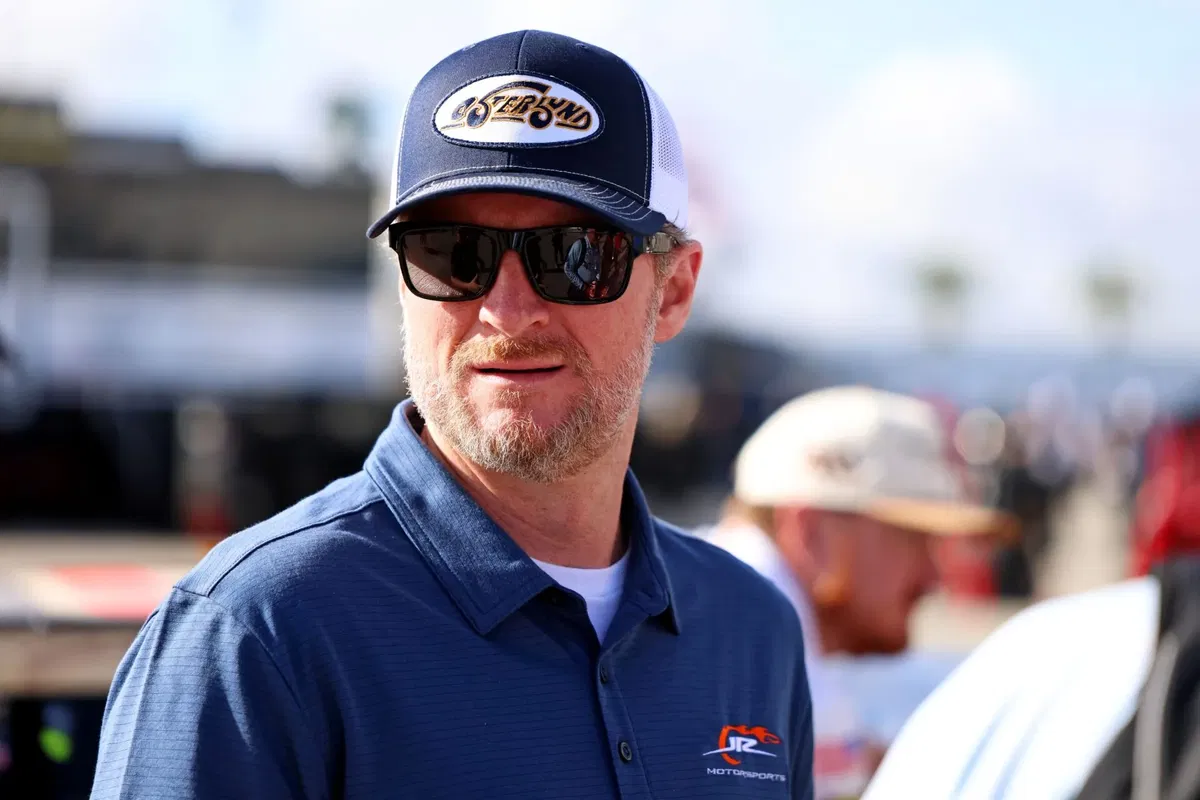
Imago
Credit: Peter Casey-Imagn Images

Imago
Credit: Peter Casey-Imagn Images
NASCAR’s playoff format has been through a lot of changes over the past decade. What started as a way to create more excitement at the end of the season has shifted the focus entirely. New questions soon surfaced about fairness and the system rewarding the right drivers. In response, NASCAR recently formed its Playoff Format Committee. This includes a group of insiders, including Dale Earnhardt Jr., to discuss possible tweaks and improvements. Soon enough, new factors came to light about these workings. And recently, Dale Jr even revealed a major truth about the role TV plays in these decisions.
Watch What’s Trending Now!
TV networks like FOX and NBC aren’t just broadcasting NASCAR. They are major business partners, bringing in millions through broadcast rights. That kind of money inevitably comes with influence, whether anyone admits it or not. NASCAR insists networks don’t make decisions for the sport. However, insiders hint that the relationship is more complicated. In fact, according to Dale Jr., it’s exactly this dynamic that the committee has started to explore.
ADVERTISEMENT
Dale Earnhardt Jr. explains how TV shapes the playoffs
Dale Earnhardt Jr. recently offered a rare glimpse into what those discussions look like on his podcast. He said the committee started off as a simple “let’s talk and see what comes of it” conversation. No one expected to rewrite the rules right away. But the question of TV’s influence quickly became a point of conversation.
Dale Jr noted that networks often publicly deny having any sway. But despite their statements, their financial stake speaks volumes. “If I’m NASCAR and you wrote me that check, I’m calling you, ‘Hey man, I’ve not made a decision yet, but this is kind of where we’re headed,’” he said. That truth shows just how much subtle influence TV can have behind the scenes.
Dale Jr also explained how networks try to keep their distance publicly. He implied that they avoid the appearance that they are pushing NASCAR’s decisions. “TV can say that and they can actually believe that. But if I’m NASCAR and you wrote me that check, I’m calling you,” he said. In other words, even if networks say they aren’t influencing the sport, the reality is that NASCAR keeps them in the loop. Even if not entirely, at least enough to avoid friction with one of its biggest financial partners.
ADVERTISEMENT
Is a swing for the fences worth the risk? 🤷♂️📊
🎙️ From The @DaleJr Download pic.twitter.com/8P8pg2SPch
— Dirty Mo Media (@DirtyMoMedia) October 1, 2025
This influence isn’t just about money. It can shape discussions about the playoff format itself. It could even be behind whether the sport emphasizes season-long consistency or playoff drama. Dale Jr.’s insight helps fans understand that decisions are rarely made in a vacuum.
ADVERTISEMENT
For every rule change or playoff tweak, conversations are weighing multiple interests. Over time, this has even impacted a much-discussed topic in NASCAR. A 36-race season return.
Dale Jr talks about a return to 36-race NASCAR season
At the start of the year, the idea of bringing back a full 36-race NASCAR season seemed almost unthinkable. Inside the Playoff Format Committee, the notion was “pretty taboo,” according to Dale Earnhardt Jr. Many think that the current system undermines consistent performance, and the early meetings reflected that tension. The full-season option was kept on the table, but most assumed it would never happen. That was, until the public stepped in.
ADVERTISEMENT
This debate didn’t stay behind closed doors. Social media, fan forums, and podcasts became sounding boards for the discussion. NASCAR fans weighed in on what they wanted to see. Influential voices like Mark Martin pushed for a return to the traditional points system. He argued that fans of all ages would welcome it. This mix of public and insider input created momentum. Naturally, the committee began taking the full-season option more seriously than anyone had at the start of the year.
Dale Jr. described how opinions evolved as the meetings went on. “So, when we started the meetings at the beginning of the year, the mere mention of a 36-race full season points deal was really pretty taboo,” he said. He also touched upon how Mark Martin kept the conversation alive. “He’s been vocal both in meetings and on social media, saying that fans, young and old, want that,” Junior explained. Over time, the dialogue started to change the committee’s perspective.
By the end of the series of meetings, the numbers told a different story. Dale shared that early polls showed most people favored keeping the current system. “Back in February, the majority wanted a change, mostly the multiple-race final round, and very few supported the full season,” he said. But as more drivers and media voices weighed in, the 36-race system started to gain traction. Dale estimated it went from a 2% chance at the start of the year to somewhere around 30-40% by the end. That would still be a long shot, but a lot more probable this time.
ADVERTISEMENT
ADVERTISEMENT
ADVERTISEMENT
ADVERTISEMENT

